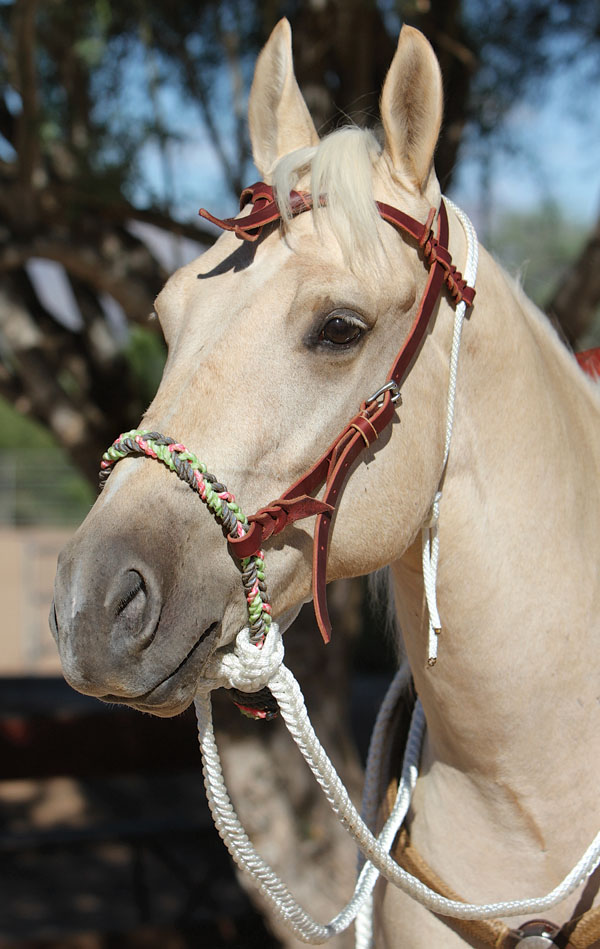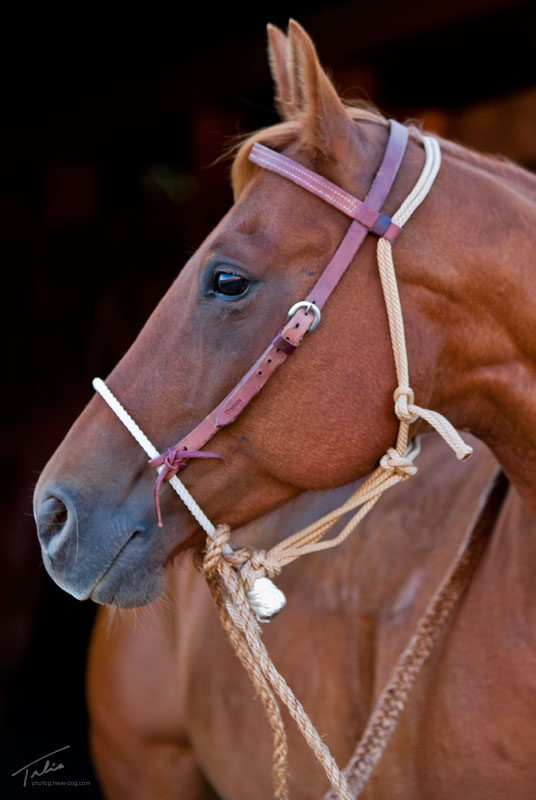Are you tired of the endless cycle of purchasing horse bits, only to discover they don't quite fit your equine companion? The quest for the perfect bit can be a costly endeavor, but understanding the alternatives, like the hackamore, can offer both financial relief and improved horse-riding experiences.
The world of equestrian equipment can often feel overwhelming, especially when navigating the myriad of options for bits and bridles. The financial burden of trying different bits, hoping to find the perfect fit for your horse, can quickly accumulate. Many riders find themselves spending hundreds of dollars on equipment that may not ultimately work for their horse, leading to frustration and financial strain. This is where the hackamore, a bitless bridle, comes into play, offering a different approach to horse control and potentially easing the financial pressure.
For those involved in barrel racing, the pursuit of affordable yet effective equipment is particularly important. The ability to find solutions that don't compromise on quality while remaining budget-friendly can make a significant difference in the ability to keep pursuing the sport they love. This is especially true within the specialized sphere of barrel racing, where the right equipment can define the margin between success and defeat.
Here's a glimpse at key terms and concepts:
| Term | Description |
|---|---|
| Hackamore | A type of bitless bridle that controls a horse through pressure on the nose, jaw, and poll. |
| Bit | A piece of equipment placed in the horse's mouth, used for control. |
| Shank | The part of a bit or hackamore that extends from the mouthpiece or noseband, providing leverage. Shanks come in various lengths (short, medium, long) affecting the severity of the control. |
| DTE Hackamore | A specific type of hackamore, often mentioned in discussions about equestrian equipment. |
| Merrill Hackamore | Another specific type of hackamore, often compared to the DTE model. |
| Barrel Racing | An equestrian sport where horse and rider attempt to complete a cloverleaf pattern around barrels in the fastest time. |
When exploring alternatives to traditional bits, the hackamore stands out. Unlike bits that rely on the horse's mouth for control, the hackamore utilizes pressure points on the nose, jaw, and poll. This makes it a popular choice for riders seeking a gentler approach or for horses with mouth sensitivities. The design allows for a different kind of communication between horse and rider, often promoting a more harmonious partnership.
The design of a hackamore involves components like the noseband, shanks, and curb strap (in some models). The noseband is the primary point of contact, applying pressure to the horse's nose when the reins are used. The shanks provide leverage, and their length can impact the severity of the pressure. The curb strap, when present, adds further control by applying pressure to the jaw.
The market offers a variety of hackamore designs, from the innovative Zilco flower hackamore to the traditional English Stubben hackamore and the Western Reinsman hackamore. The choice depends on the riding style, the horse's individual needs, and the rider's preferences. The options in the market are many, each offering its own unique features and benefits. A wide selection ensures riders can find the right tool for their specific needs.
The Goostree hackamore, designed with a flexible chain nosepiece covered in a soft polyurethane coating, exemplifies the focus on rider comfort. This design ensures flexibility, reducing the chance of causing discomfort. The features of the Goostree hackamore focus on the horse's comfort and allow for more subtle communication. This product is a prime example of the evolution of hackamore design, prioritizing the well-being of the horse.
The fit of a hackamore is crucial to its function. Some riders prefer a tighter hackamore, often called a nose hackamore, while others favor a longer design with more movement. The length of the hackamore, as measured from the heel knot to the nose button, can vary, and riders must find the size that best suits their horse's conformation and their riding style. Achieving a proper fit is essential for ensuring that the hackamore functions correctly and that the horse is comfortable.
The use of a hackamore is not limited to a single discipline; it's suitable for a variety of equestrian activities. From the jumper ring and cross-country course to everyday riding, hackamores provide precise control. This versatility makes them a favorite among competitive riders and recreational riders. Its adaptability makes it a valuable piece of equipment for diverse riding styles.
The DTE hackamore and the Merrill hackamore are frequently discussed, leading to questions regarding their respective merits. Riders often compare these two models, seeking to understand the differences and determine which best suits their needs. The specifics of each design, the materials used, and the overall feel can influence a rider's choice. The market also has many of the components of the hackamore available in the market that add to the customization of your equipment.
In a similar vein, the debate between different types of bits continues. The choices include traditional bits such as the sherry cervi zesterra, happy mouth bits, centaur bits, and myler bits. The variety allows riders to choose the equipment that will be the most suitable for their horses. This emphasizes the dynamic nature of the equestrian world, where equipment choices are constantly evolving to cater to the needs of the horse and rider.
The rise of online platforms has brought the issue of stolen photos and counterfeit products to the forefront. Incidents involving the unauthorized use of photos of hackamores being sold on various platforms have raised questions about intellectual property rights and the integrity of the market. These unauthorized transactions can be a significant problem for both the makers and the buyers.
The availability of hackamores at various price points reflects the diversity of the market. The cost of a hackamore varies, from $65 for an S-shank hackamore to $100 for a DTE hackamore, among others. The wide price range allows riders with varying budgets to find suitable equipment. This financial aspect can also influence the decisions of riders when choosing a bit or a hackamore.
The use of a mechanical hackamore involves pressure on the horse's nose and jaw when the reins are used. When the reins are relaxed, the hackamore should rest in a neutral position. This design provides a balance of control and release, which can benefit horses that are sensitive to pressure. The mechanical hackamore has a long history, originating in the U.S. among western riders.
The process of trying out new equestrian equipment is often an exciting experience for riders. One's familiarity with a specific piece of equipment, such as the english hackamore, will determine the thrill of trying something new. The desire for a fresh experience highlights the dynamic nature of the equestrian world. The introduction of a new western cp fleece lined hackamore with curb strap may be a welcome option.
The use of a hackamore is not always a replacement for bits. It's a tool that should be implemented on the foundation of a rider's understanding of the horse's needs. The gentler approach can be beneficial for horses with mouth sensitivities. This decision can influence a horse's overall comfort and responsiveness.
The use of hackamores can also be a good choice for horses who cannot tolerate a bit. For those horses, hackamores exert pressure on the jaw, nose, and poll. This approach offers riders an alternative for horses that are not suited to bits. This can improve the comfort and well-being of the horse.
In some instances, events are organized to help a cause. The teal rope nose hackamore is a good example. The donations from these sales are directed towards a particular fund. The commitment to use a product to raise money is another way the equestrian community gives back. The integration of giving back to the community is a testament to the compassion and spirit within the equestrian community.
The choice between a DTE or a DRM hackamore can be a topic of debate among riders. The unique designs and features of each model often lead to discussions regarding their respective benefits. The selection of the right tool hinges on factors like the horse's needs and the rider's experience. The decision-making process is an important part of the rider's journey.
The phrase "it's like your perfect unicorn bit that you always wanted to find" captures the emotions of satisfaction. When riders find the ideal piece of equipment, it can feel like discovering a solution to a long-standing problem. This illustrates the importance of finding the right tools for the best experience. The perfect piece of equipment can transform a horse-riding experience, creating a feeling of satisfaction.
The search for the perfect bit or hackamore is an ongoing process for many riders. The evolving market offers various options, allowing riders to find what best fits their horses' needs. This journey is not just about finding the correct tools but also building a deeper relationship with one's horse. The dedication to this search signifies the rider's commitment to the well-being of their equine partner. The dynamic nature of the equestrian world offers endless possibilities for innovation and improvement.


